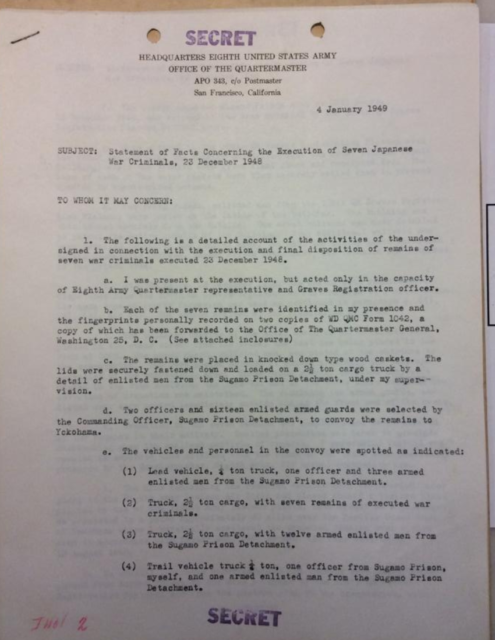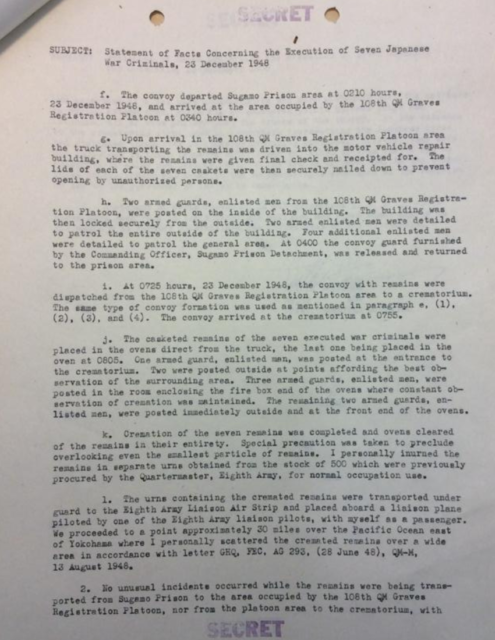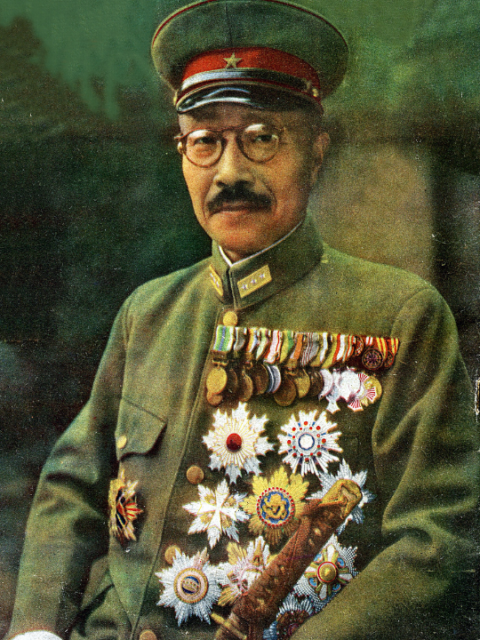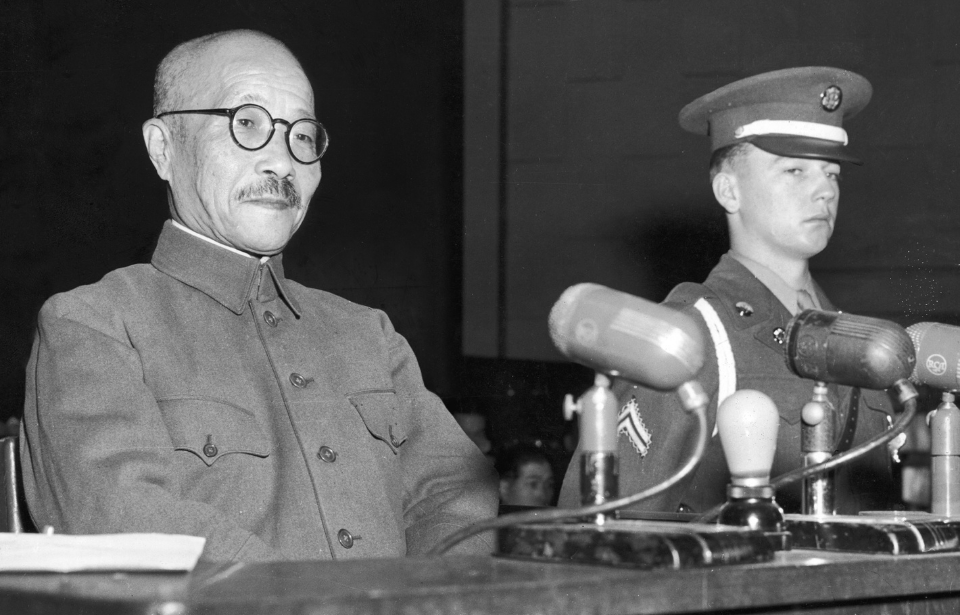A university professor from Japan has unveiled declassified U.S. documents that hold the answer for the whereabouts of executed WWII Japanese Prime Minister Hideki Tojo. The location of his remains has long been a mystery in Japan, considering the high status he once held in the country.
Professor Hiroaki Takazawa from the Nihon University has publicly released the documents that show Tojo’s ashes were actually scattered over the Pacific Ocean from a U.S. aircraft, around 30 miles (48 km) away from the city of Yokohama. Alongside Tojo’s remains were the ashes of six more Class-A war criminals (“crimes against peace”) which were also scattered over the ocean.
All seven were hanged on the same day, December 23, 1948, over three years after Japan’s surrender in August of 1945. The task was carried out with the utmost secrecy to prevent the locations of the war criminals becoming known to the Japanese public, who U.S. officials believed might worship them as martyrs.


Takazawa found the documents at the U.S. National Archives in Washington in 2018, and has spent the years since then researching and verifying the files and their contents before going public with his find. Takazawa is an expert in military tribunals, and he stumbled across the documents while searching for the trials of other war criminals.
The documents are extremely significant, as they are likely the first official documents from the U.S. that detail the cremation and scattering of these important Japanese figures’ remains. For the first time, they provide Japan with the approximate location the ashes of these notorious historical figures were scattered.
In the documents, U.S. Army Major Luther Frierson said, “I certify that I received the remains, supervised cremation, and personally scattered the ashes of the following executed war criminals at sea from an Eighth Army liaison plane.” Also in the document, Frierson said, “We proceeded to a point approximately 30 miles over the Pacific Ocean east of Yokohama where I personally scattered the cremated remains over a wide area.”
Japan’s WWII era is still a taboo topic
The legacy of the executed men has continued to be a tough subject for the Japanese, especially without knowing what happened to, and the location of, their remains. Some conservative Japanese politicians have soured relations with nearby nations like China and South Korea as they still hold Tojo in high regard. Many believe this indirectly downplays the horrific activities conducted by the country during WWII.
This is particularly evident at Tokyo’s Yasukuni Shrine, where many Japanese politicians come to honor the war criminals.
Hideki Tojo was the Prime Minister of Japan from 1941 to 1944 and was strongly in support of the Japanese attacks at Pearl Harbor. During his time in office, Tojo oversaw much of Japan’s military activity, including the many war crimes committed by the nation. After Japan’s surrender and the subsequent arrest of high-ranking Japanese officials, Tojo attempted suicide with a gunshot to the chest. The bullet missed his heart, and he eventually recovered.

Tojo’s great-grandson, Hidetoshi Tojo, said the lack of remains has brought continued humiliation to the families of those executed on December 23, 1948. He said “Everything about my great-grandfather was sealed, including his speeches. Taking that into consideration, I think not preserving the remains was part of the occupation policy.”
Despite not having any physical remains, Hidetoshi is glad the details of his great-grandfather’s resting place have been revealed.
“If his remains were at least scattered in Japanese territorial waters … I think he was still somewhat fortunate,” Hidetoshi said. “I want to invite my friends and lay flowers to pay tribute to him.”
Takazawa said, “In addition to their attempt to prevent the remains from being glorified, I think the U.S. military was adamant about not letting the remains return to Japanese territory … as an ultimate humiliation.”
More from us: Ämari Pilots’ Cemetery: An Abandoned Graveyard That Uses Airplanes As Gravestones
Not only did the U.S. want to keep the location of the ashes a secret, but they also wanted absolutely no physical remains to be left behind, so they made sure the ovens were completely free of ash, as well as any other objects or containers that came into contact with the remains. Major Frierson said, “Special precaution was taken to preclude overlooking even the smallest particles of remains.”
Takazawa’s work will not stop with this historic discovery, as he plans to continue researching the trials of other war criminals.
